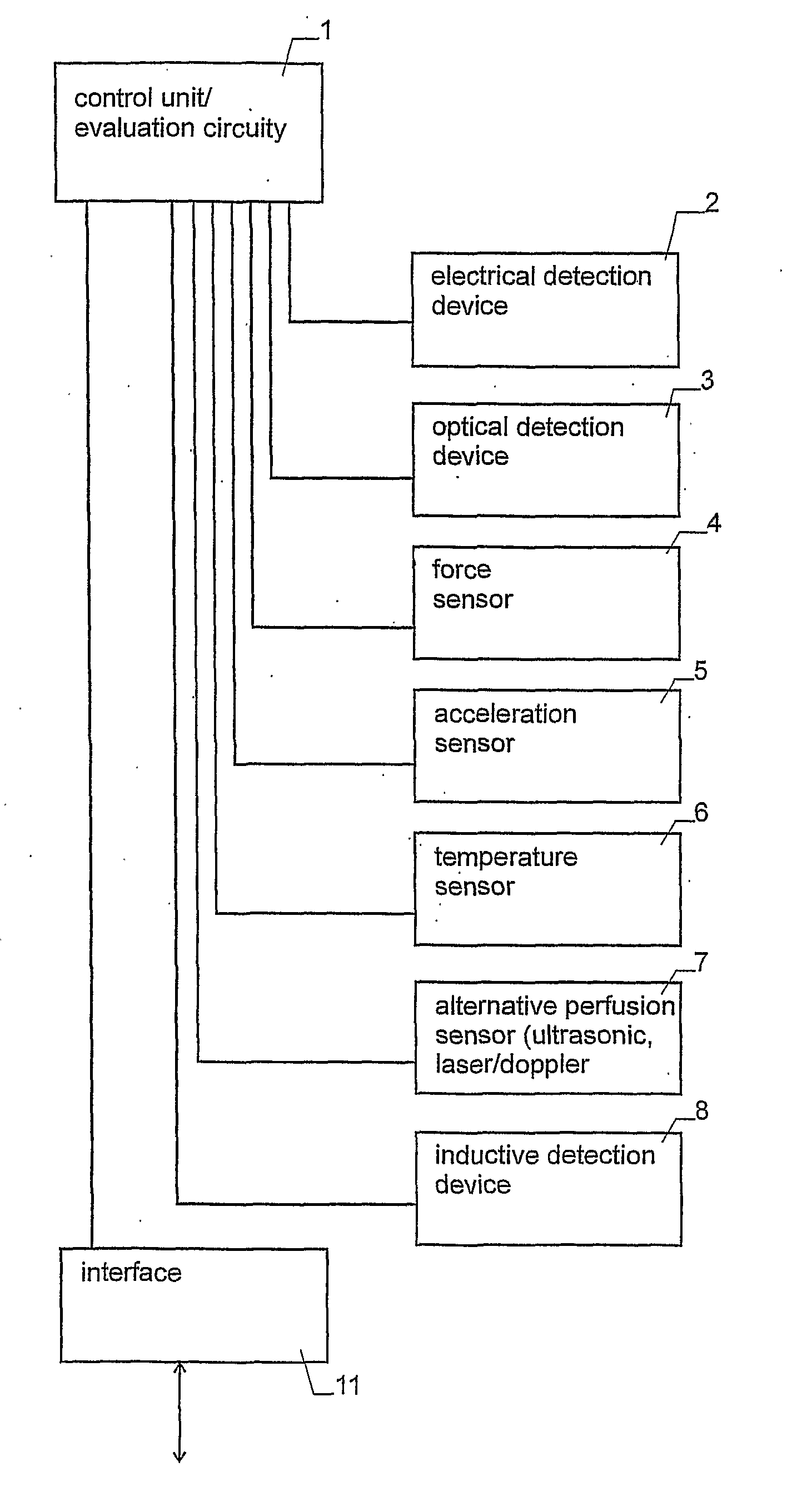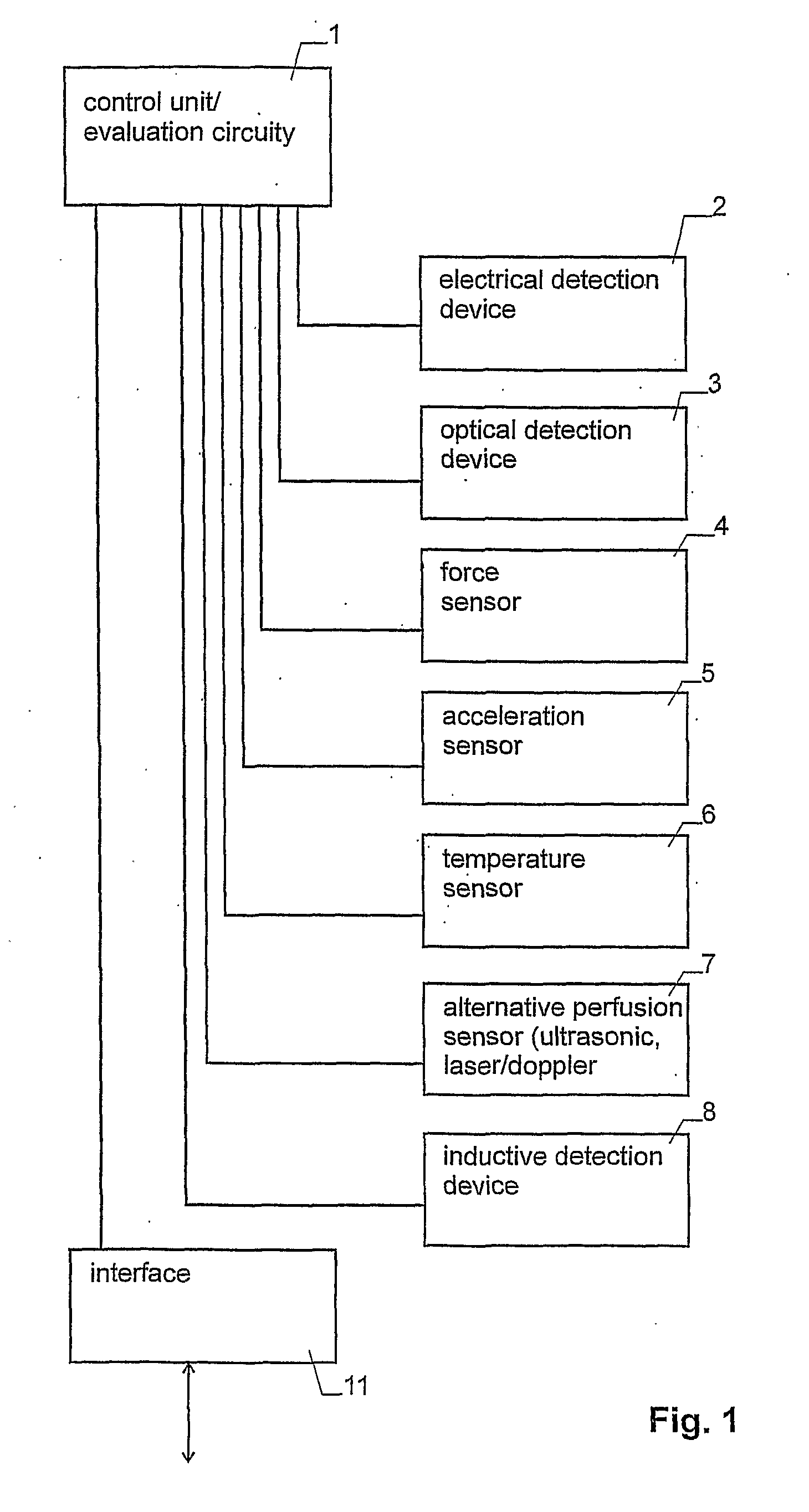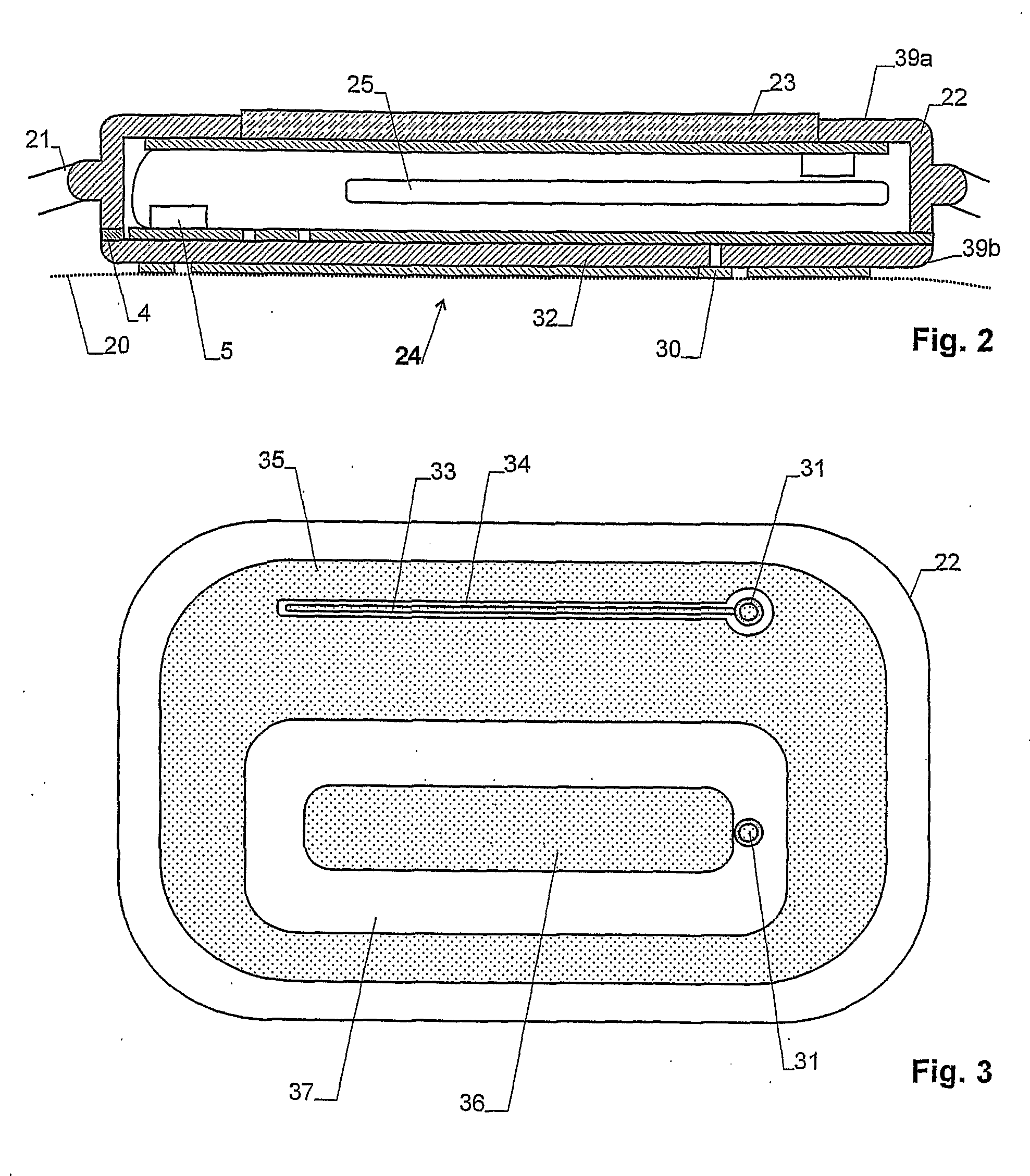Device for Determining the Glucose Level in Body Tissue
a technology of glucose level and body tissue, applied in the field of determination of glucose level in body tissue/blood, can solve the problem of only using long-term accuracy, and achieve the effect of reducing the dependency of the result on skin hydration
- Summary
- Abstract
- Description
- Claims
- Application Information
AI Technical Summary
Benefits of technology
Problems solved by technology
Method used
Image
Examples
Embodiment Construction
[0029]1. Overview
[0030]FIG. 1 shows an overview of an embodiment of an apparatus illustrating the various aspects of the present invention.
[0031]As can be seen, the apparatus comprises a control unit and evaluation circuitry 1, which can e.g. be implemented as a microprocessor, peripheral circuitry and software components suited for carrying out the various tasks described below. In addition, the apparatus comprises various sensor modules 2-8:[0032]An electrical detection device 2 has electrodes for applying an electrical field to the tissue of the user and measures at least one parameter describing the response of said tissue to said electric field.[0033]An optical detection device 3 has a light source and a light receiver for measuring at least one parameter describing a transmission or reflection of light by the tissue.[0034]A force sensor 4 is designed to measure a force parameter indicative of the force by means of which the apparatus is pressed against the tissue or between th...
PUM
 Login to View More
Login to View More Abstract
Description
Claims
Application Information
 Login to View More
Login to View More - R&D
- Intellectual Property
- Life Sciences
- Materials
- Tech Scout
- Unparalleled Data Quality
- Higher Quality Content
- 60% Fewer Hallucinations
Browse by: Latest US Patents, China's latest patents, Technical Efficacy Thesaurus, Application Domain, Technology Topic, Popular Technical Reports.
© 2025 PatSnap. All rights reserved.Legal|Privacy policy|Modern Slavery Act Transparency Statement|Sitemap|About US| Contact US: help@patsnap.com



